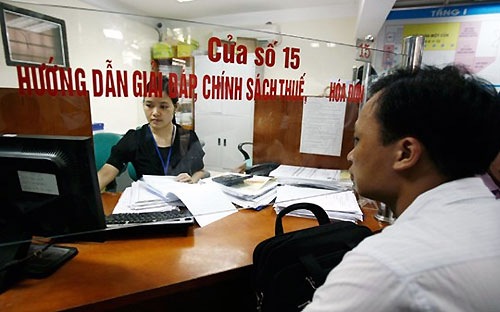M&A is understood as the activity of acquisitions and megers of enterprises. This term is an abbreviation of Mergers (Sáp nhập) and Acquisitions (Mua lại). The M&A Law in enterprises are currently not specifically regulated by law in Vietnam.

Overview of M&A Law in Enterprises in Vietnam (Illustrative image)
Although M&A Law are not regulated in a specific legal document in Vietnam, they are still mentioned in several other legal documents, such as: Enterprise Law 2014; Competition Law 2018;... From the scattered regulations in current legal documents, M&A Law can be summarized through the following contents:
1. M&A Concepts
According to the provisions of the Enterprise Law 2014, merger and consolidation are considered forms of enterprise restructuring.
- Enterprise merger is understood as:
One or several companies can merge into another company by transferring all assets, rights, obligations, and lawful interests to the receiving company, thereby terminating the existence of the merged company;
- Enterprise consolidation is understood as:
Two or several companies can consolidate into a new company, simultaneously terminating the existence of the consolidated companies.
In general, M&A Law originate from two main activities: mergers and acquisitions. Enterprise mergers are understood as the combination of two companies of equal scale, unifying to combine shares. The merging company will transfer all assets, rights, obligations, and lawful interests to the receiving company, while terminating the existence of the merged company to become a new company. Enterprise acquisition is understood as a form of combination where one company acquires or takes over another company and becomes the owner. However, the acquisition does not form a new legal entity.
2. Characteristics of M&A
- In principle, it must create shareholder value (also known as “synergistic value”) greater than the combined current value of the two enterprises when operating separately.
- In form, currently, M&A Law in Vietnam can be carried out in ways such as:
- Direct capital contribution into the enterprise;
- Purchasing issued shares or contributed capital of members or shareholders of the company;
- Enterprise merger;
- Enterprise consolidation;
- Enterprise division, separation.
In practice, M&A Law in Vietnam are mainly conducted through direct capital contribution and purchasing shares or contributed capital of enterprises.
- In terms of purpose, when investors engage in an M&A deal, they have specific objectives.
+ For large enterprises, the aim is often to own shares/contributed capital to:
- Gain control, partake in significant decisions of the merged/acquired company rather than merely investing in small holdings;
- Increase market share, dominate the market, and enhance the economic strength of the merged/acquired enterprise.
+ For small and medium enterprises, the purpose of M&A activities is to:
- Consolidate economic strength, enhance competitiveness, and establish a certain position in the market;
- Cut unnecessary production or operational costs, increasing operational efficiency.
3. M&A Process
Currently, there is no regulatory standard process or common method for an M&A deal in the Vietnamese market. However, generally, an M&A deal goes through three phases with five implementation steps as follows:
Phase 1: Pre-M&A
Step 1: Accessing the target
The basis for conducting M&A activities is identifying the target. Each potential target company has specific characteristics to consider. After identifying the target, investors must survey, assess, and analyze this target based on aspects such as business field; market position and potential; corporate governance; infrastructure, technology, etc. Accessing the target can be done directly by the investor/company or through intermediaries with advisory and brokerage functions.
Step 2: Due diligence report
After accessing the target, the merging/acquiring company (referred to as the Buyer) will hire professional legal and financial consultants to comprehensively evaluate the target based on internal information provided by the merged/acquired company (referred to as the Seller). This provision is typically based on a confidential information agreement between the parties.
Depending on the target and the Buyer's needs, a due diligence report may include financial or legal due diligence or both. The financial due diligence report forms the basis for determining the value of the M&A deal. The legal due diligence report determines the legal status and risks when deciding to acquire or merge the company.
Phase 2: Signing M&A
Step 3: Negotiation and signing M&A
After obtaining detailed due diligence results, the Buyer identifies the form of execution for the M&A deal, whether it is a merger, consolidation, or acquisition (partial or full). At this point, the parties will negotiate to reach an agreement to sign the M&A deal. The negotiation process addresses issues such as the form of the M&A transaction, transaction price, benefits, and obligations of the enterprises, post-M&A issues. However, during this process, a challenge arises if the parties cannot agree on the transaction price. In this case, the parties may seek an independent valuation unit to determine the value of the Buyer.
Step 4: Legal procedures for recording M&A
The acquisition of a company by the Buyer is only recognized by law when legal procedures related to the transfer from the Seller to the Buyer are completed, particularly with assets and rights that must be registered with competent authorities. Registration procedures include: changing members; changing business fields; transfer of shares/contributed capital, etc. Completing this step signifies the conclusion and completion of an M&A deal.
Phase 3: Post-M&A
Step 5: Enterprise restructuring
The post-M&A restructuring phase is a challenging task for the Buyer to prevent M&A failures. After completing the legal procedures to record M&A, the Buyer faces challenges related to employee instability, management policy stagnation, and corporate cultural conflicts. This requires the Buyer to have sufficient capacity to reassess and exploit the workforce of the acquired company.
The current state of M&A activities in Vietnam still faces significant challenges. The biggest obstacle is the lack of unified legal regulations on M&A activities, leading to ineffective related activities in the M&A process. Due to unclear regulations and lack of a basis, information disclosure or financial reporting lack transparency; inappropriate valuation or tax issues make investors, especially foreign investors, hesitant to decide to invest in the Vietnamese M&A market with too many risks to confront.
Thuy Tram
- Key word:
- M&A
- M&A Law
- enterprise
- Vietnam
 Article table of contents
Article table of contents










.Medium.png)
.Medium.png)
.Medium.png)
.Medium.png)
